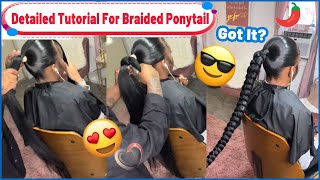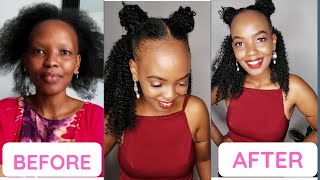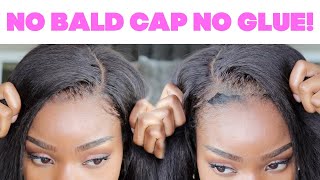Response To “5 Hair Blogger Falsehoods Debunked by a Professional Cosmetologist” On Afrobella Part 2
 In Part 1 we were introduced to Camille Reed who was interviewed by Bella creator of Afrobella.com. Camille, a professional cosmetologist had expressed concerns about what she deemed as misinformation that bloggers and vloggers have been spreading throughout the natural hair community.
In Part 1 we were introduced to Camille Reed who was interviewed by Bella creator of Afrobella.com. Camille, a professional cosmetologist had expressed concerns about what she deemed as misinformation that bloggers and vloggers have been spreading throughout the natural hair community.
Well in addition to the concerns discussed in part 1 there were a few more issues including the use of permanent hair color at home.
Camille said:
I have been a licensed Cosmetologist for several years. The more that I learn about color, the more I realize how dangerous these chemicals can be in the wrong hands. Here, chemicals are being re-arranged and keratin (the chemical protein that makes up the hair) is being affected. There are some kinds of color that can be done safely at home, such as semi permanent or water-based rinses. I see the worst compound damage occur when sisters are trying to blonde or bleach blonde themselves at home. Going blonder removes protein from the hair. Most natural sandy colored and blondes have very sparse, fragile hair. Structurally it is not very strong. So imagine this, if your natural color is a very dark brown…lifting 4-6 (or more) levels is going to severely weaken your hair!
Save yourself the heartache of watching your hair break and deteriorate. Call a pro! Make sure said pro is a licensed professional with color experience (and images to prove it!).
p.s. Coloring your hair also means you must change your shampoos to being sulfate free. Even if it’s “all natural.”
The only eyebrow raising statement here is Camille saying that blondes have sparse hair. While most of us (brunettes) have one hundred thousand hairs on our heads, it is a well known fact that blondes on average have one hundred and forty thousand hairs. Hmm . . . fragile it may be but sparse it’s not.
Apart from that, I will admit there is not much to debunk here, bleaching your hair is no joke and should be done with the utmost care. Much like Camille Reed I would recommend going to a professional just to ensure you are taking all the proper precautions. I am not sure about ‘chemicals being rearranged’ but to get to the heart of the science, every hair strand is made up of four types of bonds only one of which is affected by color treatments.
The four bonds include the Hydorgen Bonds which is usually altered by heat, the Peptide Bond that is not affected by heat but can be altered using chemicals such as a relaxer, the Disulfide Bond which is pretty much the back bone of the strand providing that dense protein structure. The final bond which is most relevant with regards to color is called the Salt Bond which are altered based on the PH levels of the chemicals used in the color treatments.
During the treatment the cuticles of the strands are lifted causing the color to be deposited to the strand. Bleaching the hair can adversely affect the strongest of all the bonds, the Disulfide Bond breaking down the protein hence causing breakage.
To get your hair properly maintained after a color or other harsh treatment it would be to your advantage you to be educated about how to care for your own hair at home as well as going to the salon. I am no professional but we have learned from experience that protein and moisture nine times out of ten is the only way to ensure that your hair remains as healthy as it can if you choose to bleach or explore color options that are lighter than your natural hue.
What Camille Reed said about The Green House Effect (aka Deep conditioning with a cap):
This term really tickles me because most professionals call this a “deep conditioning* treatment with a cap.” That’s all this is. No magic. Heat opens the cuticles slightly. If your conditioner contains some organic oils* or other materials that the fiber can absorb…then this is wonderful. Otherwise, if your conditioning product isn’t doing its job in 20 minutes, then it is a cheaply made conditioner and a huge waste of your time.
If anything the term ‘Green house effect‘ is kind of cute, and so what if someone wanted to get a little fancy and find one name to describe the act of ‘deep conditioning* with a cap’, maybe they were tired of saying all five words, who knows.
Most ladies don’t expect magic in the morning but, they are able to get moisturized hair while sleeping at which time they aren’t usually occupied or trying to save the world anyway.
There is truth to the fact that conditioning for long periods can be like trying to add more water to an already full glass whether the product is cheaply made or not. The greenhouse effect or deep conditioning with a cap process is usually a matter of convenience and at the end of the day debating the use of a term will not help a salon’s bottom line or guarantee us healthier hair.
What Camille Reed Said about Shampooing Once a week
I have gotten a ton of new clients in 2012, and their chief complaint is that “my hair is dry!” I will then ask them about their routine; what they are using and how frequent their shampoo & conditioner rhythm is. Most ladies are simply washing too frequently.
Commercial shampoos contain surfactants (chemically designed cleansers) that are designed to attach to dust and oil molecules and then be removed by water. There are glands in your skin that respond to this rhythm by producing a lipid (fat) called Sebum (pH of 4.5). In a healthy head of hair, the glands take about 3-5 days to reproduce this sebum at a rate that will not only calm the skin, but condition the hair closest to your scalp (within a half-inch or so). If you are washing every 7 days, you are telling those glands to increase the supply of this lipid to your scalp and skin. Some people’s scalp responds accordingly, mainly those who are using more organic shampoos that are created with saponins (natural, non lab created cleansers).
However, those who are using chemical detergents (yes, even of the sulfate free variety) will still end up stripping away too much of the Sebum before it has a chance to adequately calm the skin and hair. What I have found is irritated and itchy scalps, flare ups for my eczema clients, and overly dry ends for everyone! Rinse your hair as often as you want, but save the actual use of chemical shampoo for every 10 days or so. You will see vitality and suppleness return to your strands right away.”
Its a dark day in paradise when there is a problem with co-washing and it turns out that shampooing is bad too! Whats a girl to do?
All jokes aside, I am not sure how someone complaining about dry hair during a salon visit is the fault of any blogger. If I write on my blog that my hair feels ‘dirty’ every week and I choose to shampoo that often, it cannot be inferred that June bug in the UK reading my post will have ‘dirty hair’ at the same time as mine and immediately feel the urge to shampoo her hair especially considering our time zones.
Frankly It would be ridiculous to impose a shampoo regimen on another head other than your own, so this ‘problem’ does not quite fit the mold of ‘blame bloggers anonymous’. Hair care is a very personal thing and you are encouraged to shampoo your hair when it needs to be shampooed. The only way to know is to get intimate with your own head even if it starts in a salon chair.
This post brought back to center how personal hair care has become and how important the conversation is about the experience and the lessons learned. The fact is, women are getting educated and many feel obliged to share what they have learned based on their own success or failure. There is just as much pride in home hair care as there was when you used to walk out of a salon feeling like a million bucks and spending just as much.
The real issue might be that salons are faced with the challenge of fewer clients with the same or higher bills. If we are calling a spade a spade, attracting business is not as easy as it used to be because of information sharing, education and the popularity of DIY. Local movie and music stores are closing down because many more of us prefer to download our entertainment these days, so the problem of attracting customers is felt across the retail industry.
All is not lost however, now is the time for innovation in the salon industry and a great place to start is to work with the shifts in hair care rather than against it. Most women have made the decision to save that money and do everything themselves which has left some salons with nothing but a funky bottom line and a misdirected twitter tantrum.
For example if women like mixing yogurt and honey* at home for their hair, it couldn’t hurt to have a tub of Chobani on chill at the salon, and don’t forget to call the treatment something fancy, we like fancy!
Another example would be product manufactures embracing the value of the ‘cowash’ and creating cleansing conditioners to tap into that market, again recognizing the shifts and trying to compensate where they can. Better education for stylists about taking care of natural hair would be even better, we don’t ever want to suffer the injustice of a small tooth comb* on our curls again!
Additionally this suggestion might be a stickler, but invite bloggers or vloggers to your salon and tell them to bring their supporters if they like what they see. There is no better way to advance your own professionalism than through constructive teaching of what you have learned ensuring that the conversation remains consistent.
To answer Bella’s question, can a regimen be deemed sensible if it is not rooted in science and education, the answer is no, education is a valuable part of any regimen and even more so now than ever. The only difference is that now we are not holding every stylist on a pedestal as someone who will help us grow our hair long, lest we forget that it is because of some stylists that a lot of us started our healthy hair journeys with short damaged hair.
Women know that now and seek knowledge in any way they can and from all available sources, so blogs are every bit as relevant in our modern world as professional stylists are. The truth of the matter is that until majority of stylists reach a level where we as consumers feel that they are helping rather than hindering our healthy hair journey’s, even those of us with disposable income will choose the DIY route to healthier longer hair.
I would love nothing better than an experienced pair of hands in a quality salon handling my wash day every other week but can I trust the head stylist of my local Curl Up & N’ Dye salon? I’m not so sure.
What are your thoughts on Camille Reeds comments and do you think great regimens can be built without knowledge of hair science and education?




